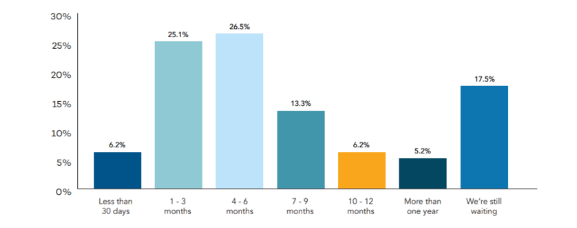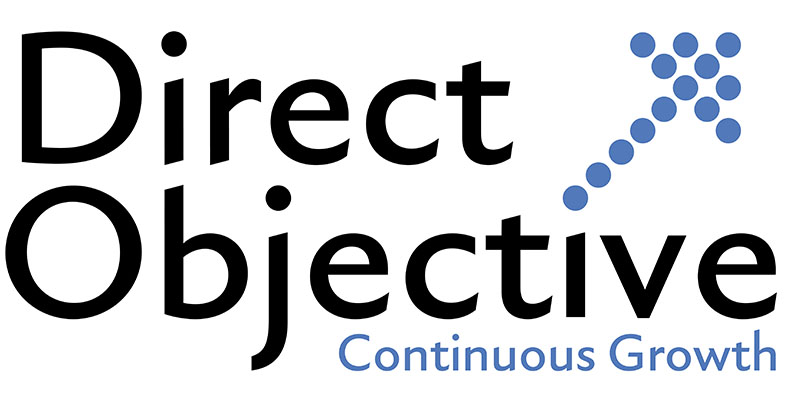What Is Account-Based Marketing (ABM) Strategy?
Account-Based Marketing (ABM) is a strategy to gain new potential clients for B2B organizations. Instead of focusing on the traditionally wide target audience, such as a specific industry or certain geography, the marketing and sales functions collaborate to select a list of key potential clients with perfectly fit characteristics for client conversion.
Each of these potential names is then assigned to a specific account. The goal is to personalize the marketing/sales experience based on the account, or sometimes the individual specifically.
As decision-making in the B2B marketplace is done by multiple functions in the organization, this ABM approach focuses on a maximum conversion rate through hyper-personalization.
What Is the Need for ABM?
In the past few years, B2B marketing strategies were mostly reliant on the concept of inbound marketing, which is like casting a wide fishing net, spreading various types of content e.g., social posts, videos, podcasts, and whitepapers across the media and hoping a potential client will “bite” the bait, therefore contacting you to receive more information. It is a process similar to fishing, but what if you are interested in catching yellowfin tuna only? Unfortunately, this widespread strategy may yield various types of fish without guaranteeing that you will catch a single yellowfin tuna. Thus, when you are going after organizations of a very specific type – your potential clients – or even a specific company or individual, an inbound strategy is inefficient. For such cases, Account-Based Marketing is recommended.

What Are the Steps of ABM Strategy?
1. Determine high-value potential clients
This is a critical phase where you identify a small group of organizations that would yield the best financial results for your business/ organization. Selecting this initial account list will define the type of ABM strategy to implement, such as one-on-one, one-to-few, or one-to-many.
2. Map contacts/functions per account
As B2B decision-making is performed by a group of decision-makers, this phase will identify these key individuals for every account before gathering individual information and further characterizing them for the customization of future campaigns.
3. Identify the active channels
For every contact, you will conduct thorough research to understand which channel is the most effective way to approach them. ABM marketing is all about customization:
-
-
- Understand their set of beliefs and concerns
- Know their habits
- Learn where they acquire their knowledge
-
4. Develop an action plan
Build a modular plan that lists your positioning message, the campaigns per contacts within each account, the integration between campaigns, and the split of responsibilities between the marketing function and the sales function of your company. The goal is to deliver a unique value proposition and relevant content for each decision-maker throughout the buying process.
5. Establish relationships
While using a personalized approach that matches each and every contact in the account, you are likely to develop a relationship with each and every one of these contacts. You will increase their level of interest, engage them, and pique their curiosity. Nurture this relationship and evolve it into a mature relationship with a high level of trust in your solution.
6. Measure and optimize ABM results
This measurement is a combined effort between the marketing and sales functions. The goal is to lead the account towards a purchase. For larger accounts however, there may be multiple contacts to convince. In this case, you must measure your specific progress with each contact in order to measure your overall progress with the account. With united efforts, you can optimize the accumulated results from the various contacts in order to gain advancement in the overall purchase process.
What Are the Benefits of Using ABM Marketing?
Shorter sales cycle
As ABM only targets the accounts most likely to close, and it includes more thorough research on the target accounts, this allows the sales team to be better prepared to close sales. ABM means that less prospective clients are approached, but much more focused and intensive methods are applied, thus shortening the sales cycle overall.
Stand out from the crowd
The personalized implementation of ABM will be completely tailored to the different contact profiles in the account. Such a personalized offer will set you apart from your competitors in a noticeable way, because only you will have been so precise and thorough in your assessment of their needs.
Gain more profitable leads
Instead of trying to convert “All-You-Can-Get” prospective clients, ABM allows organizations to efficiently focus on targeting the high-profit clients.
Master niche markets fast
Instead of a broad understanding of a large market, ABM leads you to develop a thorough understanding of a selected audience. Consequently, you will develop valuable expertise in markets which you never would have considered without ABM.
Operate simpler tracking
While the implementation of ABM strategy is usually complex and more costly, ABM uses fewer metrics than inbound marketing. This makes it much easier and less time-consuming to analyze campaigns reports.
How Successful is ABM?
The marketing community enthusiasm surrounding ABM may lead some people to be skeptical about its benefits. However, the statistics all point to the same conclusion: adopting ABM leads to enhanced growth for businesses.
To explore this further, consider the SiriusDecisions’ 2019 State of Account-Based Marketing Study (requires registration), which recently measured ABM’s impact. Organizations measuring ROI indicated the following metrics:

When asked about how long it takes to see progress, the FlipMyFunnel’s 2018 State of Account-Based Marketing report indicated that over 50% of the respondents saw results within 6 months of implementation (see the diagram below).

These facts demonstrate why ABM has become the new industry standard for B2B marketers.
How Can Direct Objective Assist You With ABM?
Defining and implementing ABM presents many challenges, and Direct Objective is the perfect partner to work with in order to overcome them. Here are a few ABM domains that we can assist you with:
- Define the strategy of ABM
- Research and compile a list of ABM accounts while collecting and mapping contact data within those accounts
- Personalize and tailor marketing content aimed for the key contacts of each account
- Develop campaigns that can be transferable across accounts with minimal changes
- Implement MarTech tools to automate the ABM process
- Extract data, analytics, and ROI reports

What's Your MarketingReadyTM Ranking?
Click here to assess your business’ B2B Marketing Proficiency
Contact Direct Objective today to define your ABM strategy and deploy Account-Based Marketing to see ABM success!










